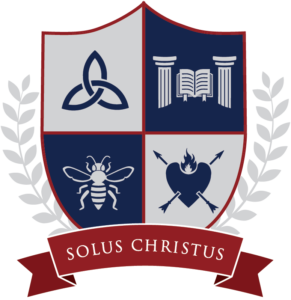Fra Angelico (c. 1400-1455) was a monk and artist who lived at the monastery at San Marco’s in Florence at the dawn of the Renaissance. Although his name was Guido as a child and Giovanni as a monk, his eventual reputation as the “angelic painter” earned him the nickname the world still calls him today.
Though capable of achieving great fame and success in the secular world, Fra Angelico was an exceedingly humble and unassuming man, content to stay near home and dedicate his life to the church. According to his biographer Giorgio Vasari, Fra Angelico often said that “true wealth was nothing but being content with little,” and that compared to holding power, “there was less hardship and error in obeying others.” He turned down a promotion to become archbishop of Florence, insisting that another man who was more capable should take the job. He even declined an invitation to dine with the pope because the prior at his monastery had not given him permission to leave his duties. Despite his lack of self-promotion, Fra Angelico’s paintings and illuminations were greatly admired. He was even summoned to paint a chapel wall in the Vatican.
Angelico was influenced by both medieval and Renaissance style, and especially by his Christian faith. One can see in his work the medieval spirit of heavy symbolism and emphasis on the heavenly. Yet one can also see the Renaissance themes of natural human expression and a realistic portrayal of the world. Angelico would only paint religious themes, and his deep piety and love for Christ flowed into his work. Vasari relates that, according to many reports, the monk always prayed before even touching a brush, and that he would weep whenever he painted a crucifix. Angelico knew the importance of living a Christian life, stating that “anyone who created works involving Christ ought always to reside with Christ.”
One of Angelico’s most beautiful works is the Adoration of the Magi (c. 1445), which you may have seen hanging in Miss Engwall’s classroom. (Another is his Annunciation, displayed in the upper school hallway.) The Adoration of the Magi was commissioned by the Medici family and begun by Angelico, who likely painted Mary and Jesus and some of the background figures to the right. After Angelico’s death in 1455, the painting was continued by his fellow monk Filippo Lippi. After centuries of changing hands, during World War II it was sent from Great Britain to the United States for safekeeping, and it remains to this day at the National Gallery of Art in Washington, D.C.
The painting itself is full of symbolism and beauty. The peacock perched on the roof of the stable signifies eternal life, since according to legend a peacock’s flesh does not decay. The pomegranate held by Christ, because it holds many seeds, stands for the many souls kept safe in the Christian church. The young men on the wall, dressed in white cloths, may represent neophytes (people preparing for baptism), and their place amid the Magi is a fitting picture of Christ’s command to baptize all nations. The crumbling Roman ruins symbolize the end of the Mosaic law as Christ comes to fulfill it. The pleasing colors of the painting and reverent but natural expression of the figures easily draw the viewers’ eyes to the narrative, but do not distract from it.
The humble master artist Fra Angelico has certainly blessed the Church with a wonderful gift through his artwork. May your Christmas and Epiphany seasons be blessed with delight in the beauty and richness of our salvation in Christ!
In Christ,
Miss Hahn

